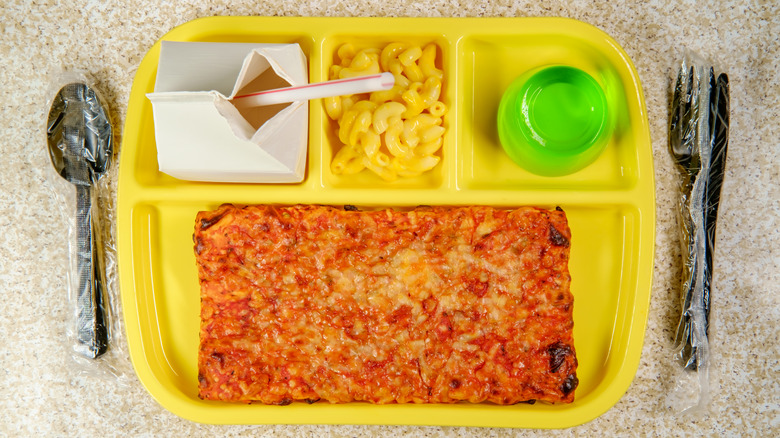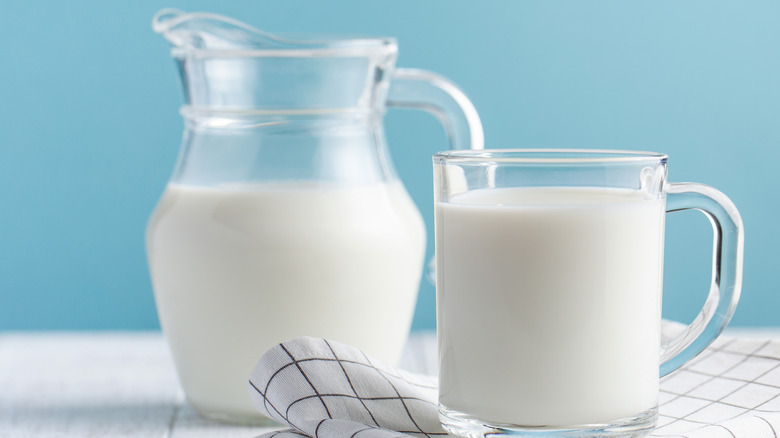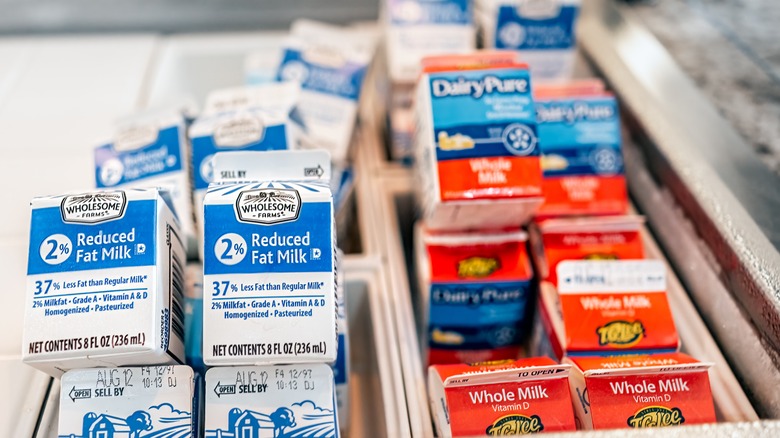The Reason School Lunches Come With Milk
Take a trip down memory lane. You're in second grade, and you just opened your Sesame Street lunch box and it's your fave — PBJ, fruit, and a Minute Maid juice box. You look over at your friend, who bought his meal from the school cafeteria. Rectangle cheese pizza, apple sauce, jello, and ... milk?
It was, and still is, a rather odd combination, and regardless of what the main course was, every meal came with a carton of milk. If you were lucky, you had the option of chocolate milk. Many high school cafeterias now offer a larger beverage selection, sometimes as à la carte or vending machine options, but those standard milk cartons are still around.
So why do school lunches come with milk anyway? Why isn't a bottle of water or organic juice included as "the norm"? The reason dates back to the 1940s, after the Great Depression ended, and eventually led to a law in the United States.
Countrywide malnourishment led to programs that were legally required to offer milk
The National Dairy Council (NDC) provides some background information, not just on when milk began to be a part of school lunches, but when schools started offering meals. It all started after the Great Depression, which left many men, women, and children malnourished, and led to food insecurities. Offering meals at school as a means of public policy was the solution to these vulnerabilities.
Included in each of these meals was a portion of milk. Why milk? Because of the number of nutrients it provides. As humans, we have all craved milk since our time in the womb for the same reason — nourishment. According to the American Dairy Association North East, milk offers 13 essential nutrients, including protein, calcium, potassium, and vitamin D.
Although the nutritional needs of children changed after the meal policy was established, it contributed to the creation of the Healthy, Hunger-Free Kids Act of 2010. This act led to the launch of various child nutrition programs and required that each program offer "a variety of fluid milk consistent with the most recent Dietary Guidelines for Americans."
What types of milk are available in schools and why?
Per Dietary Guidelines of America claims that schools can offer fat-free (skim) and low-fat (1%) milk but not 2% or whole milk. These offerings align with the Dietary Guidelines for Americans, to which all Healthy, Hunger-Free Kids Act programs must adhere, as mentioned above.
What if a child is lactose-intolerant? No problem. The site states that lactose-free milk options are available in schools by request, so children must ask the server for the milk, as it won't be given out otherwise. Fluid milk substitutes, such as fruit juice, are also available, but these options require a written request from a doctor or parent, as the International Dairy Food Association states.
What about flavored milk? Flavored milk has not been consistently available in schools since the 1940s like white milk has been. According to EducationWeek, the rise in childhood obesity is what caused some schools to ban it in 2010, since flavored milk usually contains more calories and fat than regular milk. However, the USDA announced in May of 2021 that schools could resume the sale of flavored (low-fat) milk, Dairy Foods reported.


